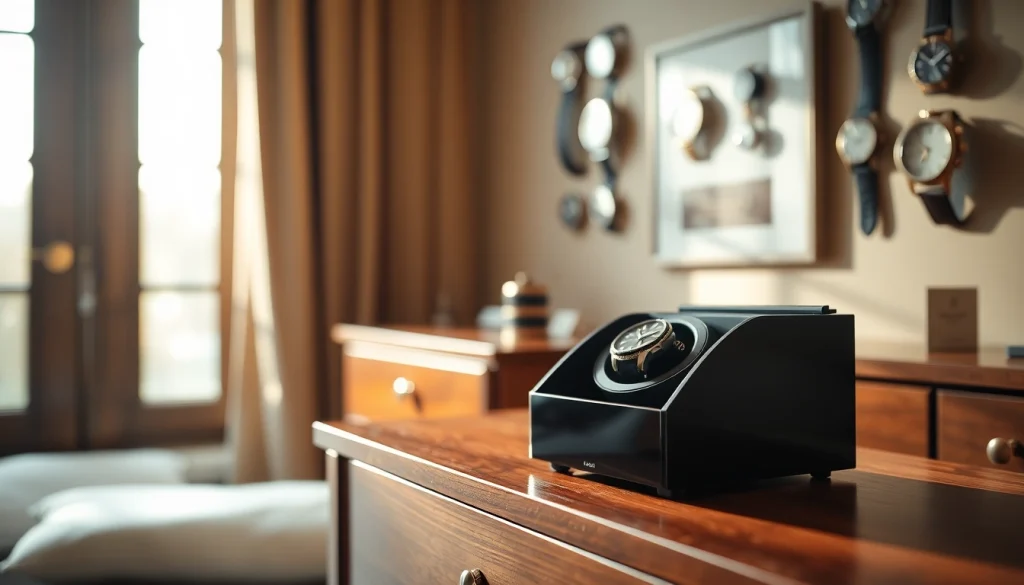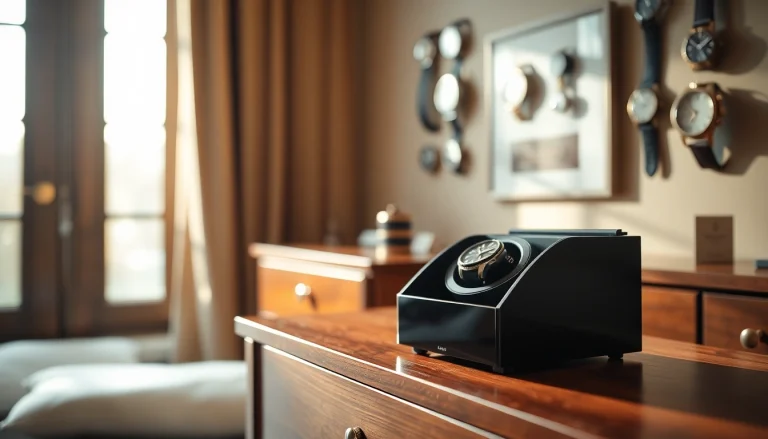
Introduction to Watch Winder
For watch enthusiasts and collectors, the maintenance and care of automatic watches is crucial to ensure their longevity and functionality. One integral tool for this care is a watch winder, a device designed to simulate the natural movement of the wrist, keeping the watch’s mainspring wound while it is not being worn. In this comprehensive guide, we will explore the essence of watch winders, shedding light on their functionality, necessity, types, features to consider when purchasing, and much more.
What is a Watch Winder?
A watch winder is an essential accessory for anyone who owns an automatic watch. These watches rely on the movement of the wearer’s wrist to wind the mainspring, which powers the watch. When not worn, these watches can lose their charge and stop functioning correctly. A watch winder operates by rotating the watch in a way that simulates wrist movement, ensuring that the spring remains wound. It allows the watch’s internal components to function as intended, thereby maintaining its accuracy and preventing various issues that can arise from idleness.
Why You Need a Watch Winder
Automatic watches can be quite sophisticated, boasting intricate mechanisms that require regular movement to function optimally. When left unwound, the gears may become dry, and the lubricants could settle or thicken, potentially leading to cosmetic or functional deterioration. A watch winder is an effective solution, especially for collectors who own multiple automatic watches. By keeping watches wound and ready-to-wear, a watch winder negates the need for frequent resetting, which can be time-consuming and tedious.
Different Types of Watch Winders
Watch winders come in various forms, each suited to different needs and preferences. The main types include:
- Single Watch Winders: These are designed to hold and wind one watch. They are compact and ideal for individuals with a single automatic watch.
- Multi-Watch Winders: These models can accommodate two, four, or even more watches, perfect for collectors. They are particularly useful for displaying watches while keeping them wound.
- Travel Watch Winders: Portable and battery-operated, these winders are convenient for traveling watch enthusiasts. They ensure that your watches remain wound on the go.
- Programmable Winders: Advanced models allow users to customize the number of turns per day and direction of rotation, catering to specific watch requirements.
Features to Consider When Buying a Watch Winder
Size and Capacity
Before purchasing a watch winder, consider your collection’s size. A single watch winder may suffice for the casual wearer, while serious collectors may need multi-watch winders. Ensure that the watch winder’s design and capacity align with your collection, providing adequate space for each piece.
Winding Mechanisms Explained
Understanding different winding mechanisms is critical when selecting a watch winder. Most models utilize one of two primary types:
- Rotational Mechanisms: Some winders rotate continuously or intermittently, mimicking wrist motion; they can often be adjusted for different watches.
- Oscillating Mechanisms: Others use a pendulum-like motion or oscillation. This can be more gentle on the watch and can help preserve the oils within the movement.
Choosing a winder with an appropriate winding mechanism tailored to your watch’s specifications is crucial for optimal preservation.
Material and Design Choices
Watch winders come in various materials, such as wood, plastic, and leather. Higher-end models often feature polished wood finishes and luxurious interiors. When selecting a winder, consider both aesthetics and functionality; the winders should align with your personal style while being sturdy enough to protect the delicate mechanics of your watches.
How to Set Up Your Watch Winder
Placement and Environment
Location is key when setting up a watch winder. Choose a clean, dry area free of excessive moisture and direct sunlight to prevent damage. The chosen spot should allow for fitting the winder in a way that both showcases the watch and enables easy access. Ensure the winder is also stable to prevent accidental movement or tipping.
Adjusting the Settings
Most watch winders feature adjustable settings for the number of turns per day and the direction of rotation. Consult your watch’s manual to identify the ideal winding specifications and then adjust the watch winder accordingly. This step is crucial for ensuring your timepiece receives the correct amount of winding without over-winding it.
Maintenance Tips for Long-lasting Use
To keep your watch winder in optimal condition, regular maintenance is essential. Here are some useful tips:
- Occasionally clean the exterior with a soft cloth to prevent dust accumulation.
- Check and replace batteries (if applicable) to ensure uninterrupted operation.
- Ensure that the winding mechanism remains lubricated as per the manufacturer’s recommendations.
Common Misconceptions About Watch Winders
Do All Automatic Watches Require a Watch Winder?
While a watch winder is an excellent accessory for most automatic watches, it is not necessary for all. Some watches can maintain their charge for extended periods when unworn. Enthusiasts should research their specific models to determine whether a winder is beneficial.
Are Watch Winders Noisy or Bulky?
Modern watch winders incorporate technology that minimizes noise, allowing discreet operation. They come in various sizes; compact models are available that can easily blend into a dresser or shelf without taking up much space.
The Cost vs. Value of a Watch Winder
Investing in a watch winder is often viewed as an unnecessary expense, but it can save time and ensure the longevity of your watch collection. For serious collectors or those with multiple automatics, a quality watch winder can be invaluable, prolonging the life and performance of luxurious timepieces.
Optimal Practices for Using a Watch Winder
How Many Turns Per Day Do You Need?
Determining the appropriate number of turns per day for your watch is essential. Most automatic watches require between 650 to 1,000 turns per day, but specifications can vary. Consulting your watch manual is crucial to avoid unnecessary strain on the mechanism and ensure optimal performance.
Watch Care Beyond Winders
In addition to using a watch winder, caring for your automatic watch involves proper handling and storage. Always store watches in a safe place, avoid exposing them to extreme temperatures, and clean them regularly to maintain aesthetics and functionality.
When to Use Your Watch Winder
Utilize your watch winder whenever you’re not wearing your automatic watches, especially during extended periods of disuse. When traveling or after infrequent use, ensuring that your timepiece receives sufficient winding is the ideal solution to keep them in prime condition.






